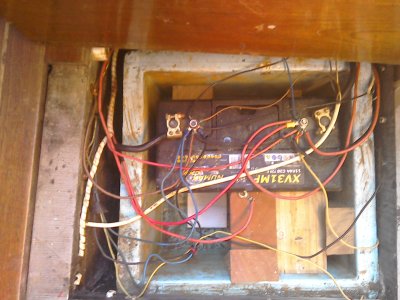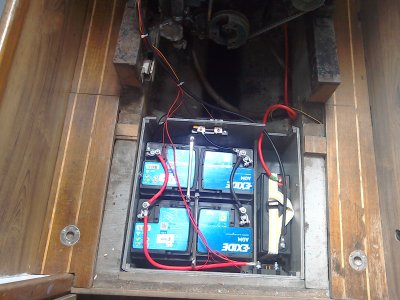Stemar
Well-known member
To increase the domestic battery capacity for Jazzcat, I need to build a new box, to take two105AH batteries with a total weight of about 50kg The existing one is bolted to the bulkhead at the forward end of the engine compartment in the port hull, and I'm planning to make a similar one for the Starboard bulkhead. I'm going to use 200gsm glass cloth (it's what I've got), with some foam strips to stiffen the bottom and sides and timber reinforcing along the back, where the mounting bolts will go (6, 8mm bolts)
I've made a female mould, covered in parcel tape and cling film, and I'm thinking that 8 layers should be adequate - two inside, then the reinforcing, and a layer to fix it in place. I'll let that go off and remove the mould while it's till fairly flexible, then 5 more to finish. Does that sound about right, or am I being too optimistic?
Thanks in advance
I've made a female mould, covered in parcel tape and cling film, and I'm thinking that 8 layers should be adequate - two inside, then the reinforcing, and a layer to fix it in place. I'll let that go off and remove the mould while it's till fairly flexible, then 5 more to finish. Does that sound about right, or am I being too optimistic?
Thanks in advance


